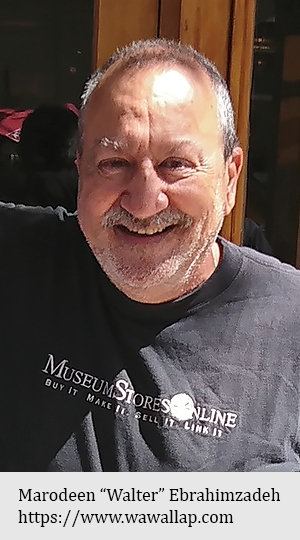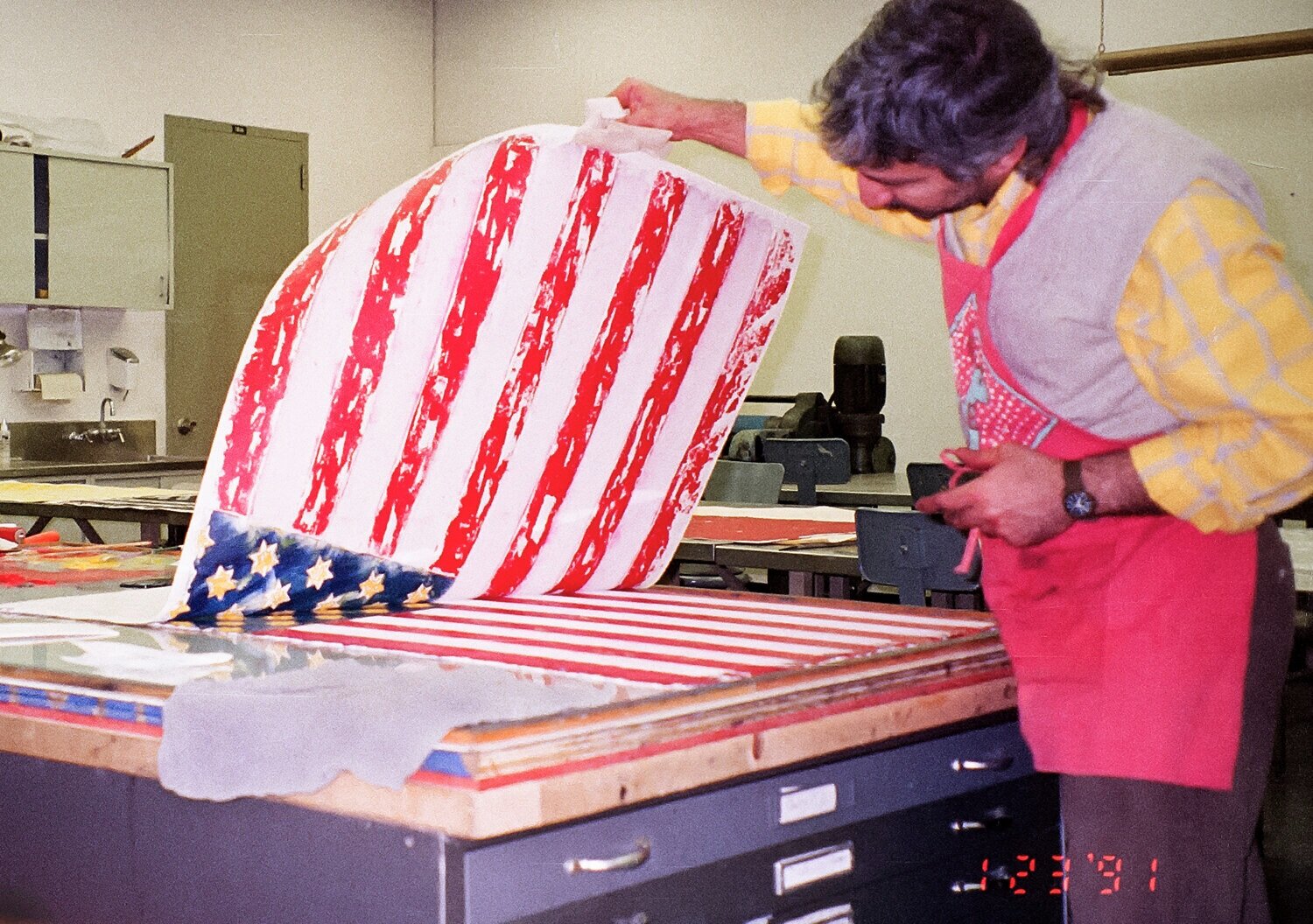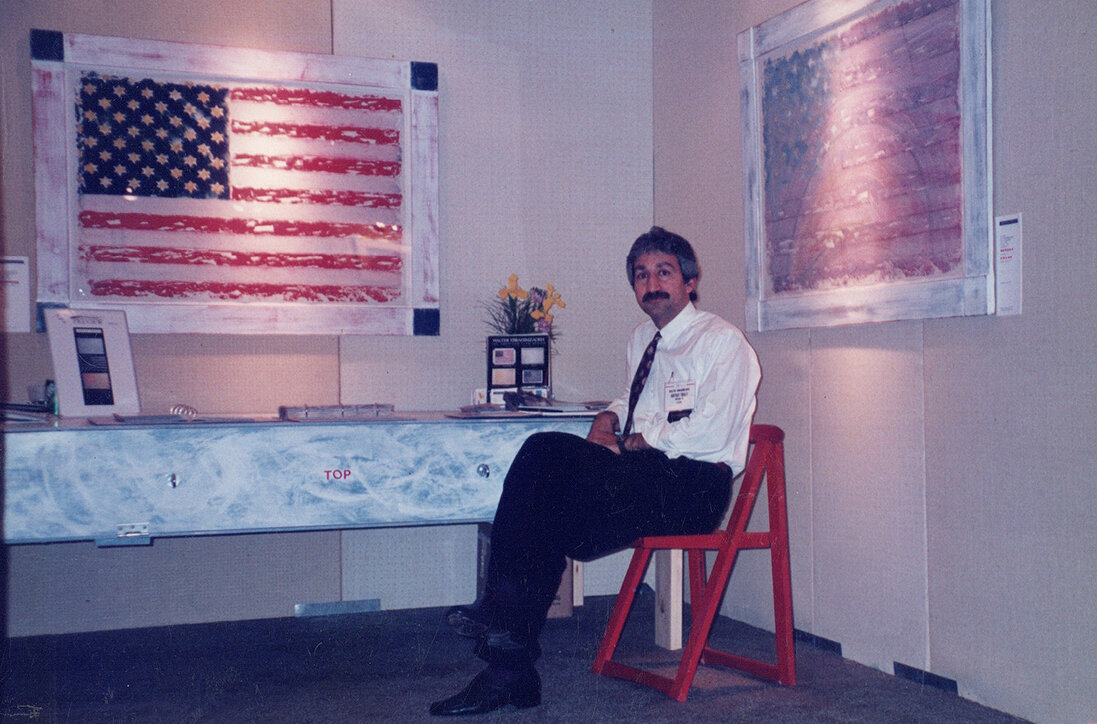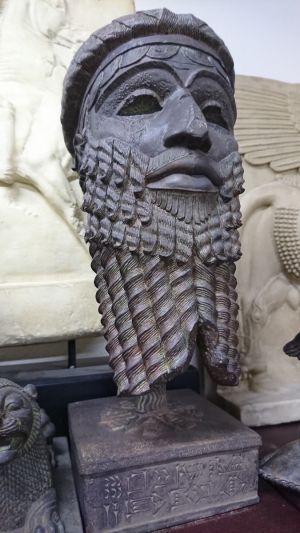Marodeen "Walter" EbrahimzadehPosted: Sunday, September 22, 2019 at 06:10 AM UT | Updated: March 26, 2025 Marodeen — Nydorm — one who possesses righteousness.
Marodeen (Walter) was born in Abadan, Iran to Andrius and Anna (Hala). His father was the head of the Abadan Oil Bank. He had five siblings. Marodeen attended the Sanaie elementary school in Abadan and later when his father retired, the family moved to Tehran, where he attended the Razi elementary school and Mahar Jordan high school in Tehran. Both the principal and vice-principal at the high school were Assyrians. Marodeen was always into arts; he loved it since childhood. After graduating from high school, Marodeen followed his heart and attended the University of Tehran, Art college. However, he did not graduate due to the political and religious upheaval in Iran and as many predicted the Shah of Iran was going to be deposed, and that Islamists and Ayatollah Khomeini were on their way to rule Iran. In 1978, the family decided to leave Iran and immigrate to the United States. Many Assyrians left Iran during those difficult times as Khomeini came to power in 1979. After arriving to the US, Marodeen attended Cal State Fullerton in California. He graduated with an BA degree in Fine Art, Print Making.
While at Cal State Fullerton he discovered printmaking and studied with Maurice Gray. From the moment he discovered the printing press, he knew he had found the medium for creating art, especially flags, inspired by the US flags at the New York City airport upon his arrival in 1978. He worked on the first plate for nearly six months and would come to the studio to print the flags at night, creating what would become the first monoprint in the envisioned series titled New Shades of Old Glory™. At the year-end class critique, there was no response from the class about the flags. The flag monoprints went into a drawer, and after finishing his studies, he moved on to start a fine art gallery and custom framing shop, Square i Gallery, in 1989 and focused on building his business. In 1991, he decided to exhibit the flag monoprints at the Art Expo in New York City. At that event, seven of them were sold, and an additional six works were sold later that year at an exhibition in a Las Vegas gallery. In a press interview at the time, the reporter implied that through the flags, he was only wanting to profit from the Middle East conflicts, but that was not at all the case. Marodeen showed his American flags series one more time in March 1996 at the New York Expo. This series was very personal for him and he then decided he did not want to continue selling the original monoprints. The flags went back into the drawer, where they remained until 2021. Realizing that the new giclée printing process would allow him to retain the original monoprints and still be able to share his flags led him to bring the flags out from the drawer and begin again to work on the series. With hundreds of notes, sketches, and doodles accumulated to develop the remaining flags in the series, he has begun printing again. The goal is to complete a series of 99 flags and offer each one as giclée prints.
In America, Marodeen realized the difficulty of maintaining the Assyrian heritage as Assyrians assimilated into American culture. This dilemma seems common among many Assyrians. Marodeen feared that the stateless Assyrians and their customs would be lost in this vast and great country. Realizing the power of the Internet, Marodeen was able to establish his online company Waw Allap in 1984 where he offered Assyrian designed wearables. In 1985, Waw Allap’s services expanded to include Assyrian posters. His work was featured in the 1985 and 2001 Assyrian American National Federation Conventions in San Jose, including Chicago and other cities that hosted the national convention. In 1995, Waw Allap grew bigger to incorporate a line of Assyrian artifact reproductions. Almost all the pieces offered by Waw Allap are inspirations from original Assyrian artifacts present at world museums such as the British Museum and The Louvre. The artistry of Waw Allap pieces is replicated in great detail and authenticity. Marodeen has great ambitions for Waw Allap — they incorporate a three-pronged goal: preservation, quality, and commitment. He hopes that one day Waw Allap will become a resource for Assyrian information on top of the continuous offering of the finest quality in Assyrian merchandise. Marodeen is open to all recommendations, suggestions and thoughts. He could be reached either by email at: or via phone at: 909-319-8030. |




